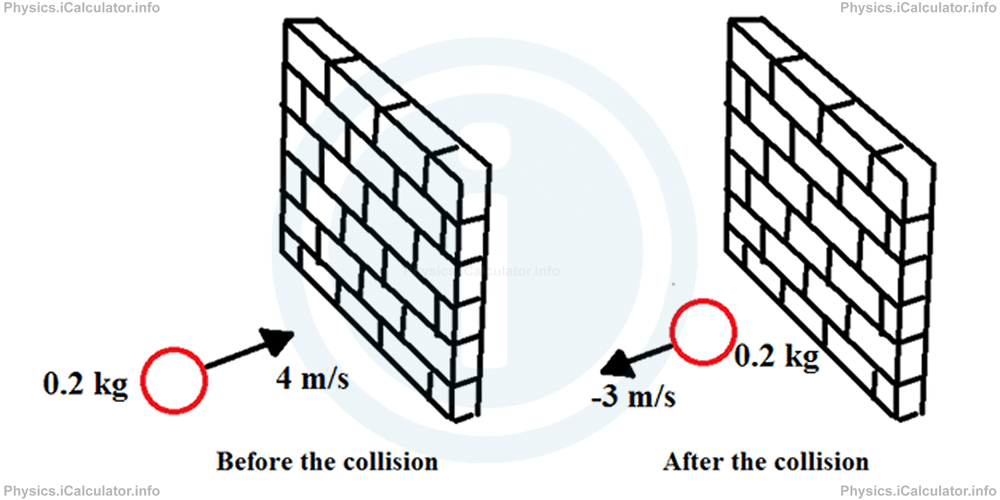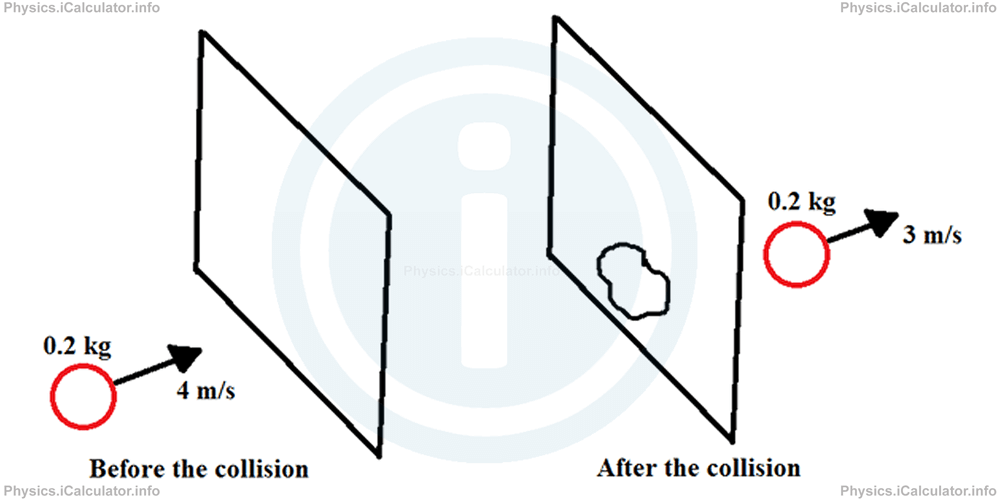Menu
Physics Lesson 6.5.2 - Change in Momentum and its Importance in Understanding Objects' Motion
Please provide a rating, it takes seconds and helps us to keep this resource free for all to use
Welcome to our Physics lesson on Change in Momentum and its Importance in Understanding Objects' Motion, this is the second lesson of our suite of physics lessons covering the topic of Linear Momentum, you can find links to the other lessons within this tutorial and access additional physics learning resources below this lesson.
Change in Momentum and its Importance in Understanding Objects' Motion
Like in Kinematics or Dynamics - in which more than in objects actual velocity we are interested in the change in velocity as this gives a better idea on the resultant force and therefore in the acceleration of the object itself - here we are more interested in the change in momentum than in the actual momentum itself. This point is explained by considering again the example provided in the Introduction paragraph.
If we take the original direction of the ball as positive, we have the following figure.

The initial momentum of the ball before the collision is
= 0.2 kg × 4 m/s
= 0.8 kg × m/s
and the final momentum is
= 0.2 kg × (-3) m/s
= -0.6 kg × m/s
If we calculate the change in momentum, i.e. p⃗1 - p⃗2 (or ∆p⃗), we obtain
= 0.8 kg × m/s - (-0.6 kg × m/s)
= 1.4 kg × m/s
On the other hand, when the ball hits the paper sheet, both velocities are positive as they are in the same direction. Therefore, we have the following figure

The initial momentum of the ball before the collision was
= 0.2 kg × 4 m/s
= 0.8 kg × m/s
and the final momentum after the collision is
= 0.2 kg × 3 m/s
= 0.6 kg × m/s
If we calculate the change in momentum, i.e. p⃗1 - p⃗2 (or ∆p⃗), we obtain
= 0.8 kg × m/s - 0.6 kg × m/s
= 0.2 kg × m/s
The interpretation of the above results is as follows:
"When the ball hits a hard surface such as the wall, its motion changes drastically. Not only does the magnitude of velocity change, but also its direction as well. Therefore, a greater change in momentum (or change in the amount of motion) is produced compared to the case when it hits a thin sheet. This is because the wall offers a higher resistance than the sheet and as a result, it affects much more the motion of the ball."
Remarks!
- Do not confuse the terms "moment" and "momentum". They express two very different concepts. While the first refers to the turning effect of a force, the later expresses the amount of motion of an object.
- If we want to calculate the change in momentum of an object or system, we must take as initial velocity the velocity of the object just before hitting the obstacle, not the very initial velocity the object may have had at the beginning of process. Likewise, the final velocity is taken just immediately after the object leaves the obstacle, not the final velocity of object's motion.
- It is called "Linear Momentum" because there also exists a rotational momentum, which we will discuss later, in the Rotational Dynamics section. In linear momentum, we take the object as moving linearly or according such a path that is a combination of multiple linear segments.
You have reached the end of Physics lesson 6.5.2 Change in Momentum and its Importance in Understanding Objects' Motion. There are 2 lessons in this physics tutorial covering Linear Momentum, you can access all the lessons from this tutorial below.
More Linear Momentum Lessons and Learning Resources
Whats next?
Enjoy the "Change in Momentum and its Importance in Understanding Objects' Motion" physics lesson? People who liked the "Linear Momentum lesson found the following resources useful:
- Change Feedback. Helps other - Leave a rating for this change (see below)
- Centre of Mass and Linear Momentum Physics tutorial: Linear Momentum. Read the Linear Momentum physics tutorial and build your physics knowledge of Centre of Mass and Linear Momentum
- Centre of Mass and Linear Momentum Revision Notes: Linear Momentum. Print the notes so you can revise the key points covered in the physics tutorial for Linear Momentum
- Centre of Mass and Linear Momentum Practice Questions: Linear Momentum. Test and improve your knowledge of Linear Momentum with example questins and answers
- Check your calculations for Centre of Mass and Linear Momentum questions with our excellent Centre of Mass and Linear Momentum calculators which contain full equations and calculations clearly displayed line by line. See the Centre of Mass and Linear Momentum Calculators by iCalculator™ below.
- Continuing learning centre of mass and linear momentum - read our next physics tutorial: Collision and Impulse. Types of Collision
Help others Learning Physics just like you
Please provide a rating, it takes seconds and helps us to keep this resource free for all to use
We hope you found this Physics lesson "Linear Momentum" useful. If you did it would be great if you could spare the time to rate this physics lesson (simply click on the number of stars that match your assessment of this physics learning aide) and/or share on social media, this helps us identify popular tutorials and calculators and expand our free learning resources to support our users around the world have free access to expand their knowledge of physics and other disciplines.